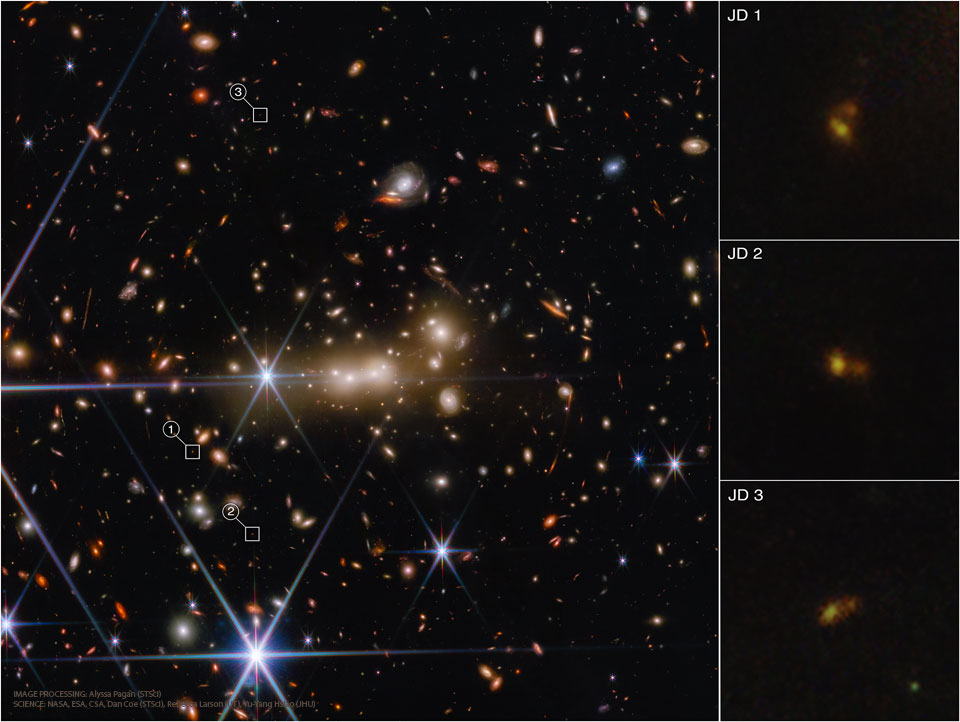2023年1月18日
MACS0647: Gravitational Lensing of the Early Universe by Webb
Image Credit: NASA, ESA, CSA, Dan Coe (STScI), Rebecca Larson (UT), Yu-Yang Hsiao (JHU); Processing: Alyssa Pagan (STScI); Text: Michael Rutkowski (Minn. St. U. Mankato)
Explanation: Gravitational lensing by the galaxy cluster MACS0647 — in which the massive foreground cluster distorts and lenses the light emitted by distant background galaxies along the line of sight — is on vivid display here in this recent multi-color infrared image from the James Webb Space Telescope (JWST). In particular, the background source MACS0647-JD is seen to be lensed three times by the cluster. When first discovered with the Hubble Space Telescope, MACS0647-JD was observed as an amorphous blob. With Webb though, this single source is revealed to be a pair or small group of galaxies. The colors of the MACS0647-JD objects are different as well — indicating differences potentially in the age or dust content of these galaxies. These new images provide rare examples of galaxies in an era only a few 100 million years after the Big Bang.
Explore Your Universe: Random APOD Generator
Tomorrow’s picture: open space
MAC0647: 韦伯望远镜的早期宇宙引力透镜
图像提供: NASA, ESA, CSA, Dan Coe (STScI), Rebecca Larson (UT), Yu-Yang Hsiao (JHU); 图像处理: Alyssa Pagan (STScI); 文稿: Michael Rutkowski (Minn. St. U. Mankato)
说明: 这幅最近来自韦伯太空望远镜(JWST)的多色红外光图像,生动的呈现星系团MACS0647所产生的引力透镜现象——此庞大的前景星系团,扭曲并会聚了在同视线方向的遥远背景星系所发出的光。具体来说,背景光源被MACS0647-JD星团会聚成3个分立的身影。当初哈伯太空望远镜发现MACS0647-JD之时,它在观测图像里是个形状难定的光斑。然而用韦伯望远镜来观测时,这个光斑解析成一对或一小群星系。MACS0647-JD内的星系之色泽也有差异,显示这些星系的年龄或尘埃含量可能也不同。这批新图像,提供了宇宙大爆炸后仅数亿年的星系之罕见身影。
探索你的宇宙: 随机APOD生成器
明日的图片: open space







